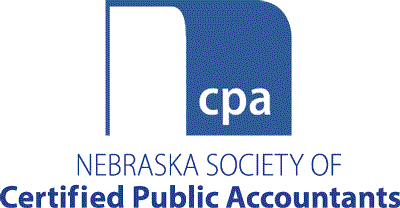The Employee Retention Credit (ERC) is huge!
In March 2021, this credit was extended through Dec. 31, 2021, and expanded, as part of the American Rescue Plan Act of 2021 (ARPA).
But, let’s face it, many of us CPAs, the highly trusted, value-added professionals, are “blowing it.” We are not fully understanding the nuances and complexities of this expanded law. As a result, we are not properly educating and helping our clients with this large, refundable credit.
So, what’s our misunderstanding about this credit? Let’s review.
The ERC is a tax credit first put in place last year as a temporary coronavirus-relief provision to assist businesses in keeping employees on payroll.
It has definitely helped. Businesses have received tens and hundreds of thousands of dollars in tax credits for the ERC. This boatload of cashflow has provided a night-and-day difference for those companies struggling to keep employees on payroll and their doors open.
However, we have also seen many companies close their doors—just not enough cash to survive. I ponder, were we there to help educate them about the new enhancements of the ERC? Did we help them get the ERC and the maximum amount allowed by this new enhanced law? Did we help them with the proper documentation so they could qualify for the ERC in order to pass muster with the IRS?
The Top 10 Mistakes & Misunderstandings Surrounding the ERC
1. My client can’t claim ERC if they’ve already claimed PPP (Paycheck Protection Program) or had their PPP loans forgiven.
Now you can claim both! Congress, in the Consolidated Appropriations Act (CAA) of 2021, removed the limitation on only claiming one or the other. PPP will only account for two and a half times your monthly payroll expenses and is meant to be spread out over six months. This leaves plenty of uncovered wage expenses for claiming ERC.
2. My client’s business did not have a drop in gross receipts of 50% or more.
The CAA has changed the qualifications so that a reduction of 20% now qualifies. BUT remember there is also another way to qualify for the ERC. If your business has been subject to a partial or full suspension due to a government order, see the next point.
3. My client’s business was not shut down during the pandemic.
Even a partial suspension order by the government (federal, state, or local) of your client’s business could potentially qualify. For instance, a partial shutdown, a disruption in their business, inability to access equipment, having limited capacity, shutdowns of their supply chain or vendors, reduction in services offered, reduction of hours to accommodate sanitation, shut down of some locations and not others, and shutdowns of some members of a business are all scenarios that still potentially qualify for the ERC. The key considerations are: Due to the government ordered partial (or full) suspension is/was your client’s business not able to continue its activities in a comparable manner, and did that result in a more than nominal impact on their business operations? Remember, the partial or full suspension is an alternative way to qualify for the ERC, separate from the reduction in gross receipts test.
4. My client’s company was deemed an essential business, so they do not qualify because of business suspension.
Even if your client’s business is deemed essential, an impact or change in their business may still qualify them. For example, even if they were open but their vendors were closed down or they couldn’t go to their client’s job site, they may still qualify. Or alternatively, if part of their business was considered nonessential and was impacted by a government-ordered suspension, they may also qualify. The scenarios discussed above in Mistake No. 3 could apply here as well.
5. My client’s company has grown during quarantine; this isn’t something they should take.
Great news! If your client’s company has grown during quarantine but experienced a full or partial suspension, there are expenses that may qualify.
6. Sales have rebounded for my client in Q1 of 2021; they can’t qualify for this credit.
With the introduction of the CAA, you have the option to look at one quarter prior to determine qualification. This means we can determine eligibility based on lost revenue in 2020. Also, if your client was subject to a full or partial suspension, they may qualify regardless.
7. My client was in losses, or they do not have any tax liability.
This is a refundable credit. In practice, this means that any credit overage above tax liability is sent to the taxpayer/business owner as a refund.
8. My client’s company has grown to more than 500 employees, so they are not eligible for the ERC.
The employee count restriction is based on full-time equivalent (FTE) employees, which is a more involved calculation than just counting everyone in the office. We helped a business with 640 employees and the FTE calculation put them at less than 500. Furthermore, if your client paid any employees to NOT work, or to work less than the hours for which they were paid, then the employee count restriction would not apply for those employees.
9. My client is a charity and the ERC is only for businesses.
The ERC also may provide significant benefit to charities, e.g., churches, nonprofit hospitals, museums, etc. Charities can be particularly good candidates for the ERC.
10. Failure to document.
Many tax advisors still think they can just create their own simple form. They check a few boxes, give a few-sentence explanation, and expect the IRS to hand over thousands and thousands of dollars on a silver platter and then play audit lottery.
We’ve talked with former senior IRS officials. It is clear that the best practice is for businesses to provide contemporaneous documentation now, when first determining whether they qualify. To avoid headaches and heartaches down the road, they need to have counsel to properly and fully document how their business qualifies for the ERC.
Let’s face it. Many companies are still struggling to stay open. There is so much business uncertainty due to COVID-19 and the variants. What affect will this have on your client’s business? Do they have enough cash to make it another month, quarter, or year?
The only shot CPAs are qualified to give is to educate and help their clients get a cash infusion. The ERC is a fantastic tax incentive that could make this happen. Let’s do our best to be that value-added, trusted professional that can give them a chance to survive!
Rick Meyer, CPA, MBA, MST is a long-time member of the Illinois CPA Society and has served on various tax committees over the past 40-plus years. He is a director for alliantgroup, a national firm that works with businesses and their CPAs to identify powerful government-sponsored tax credits and incentives. You may contact him at rick.meyer@alliantgroup.com.









